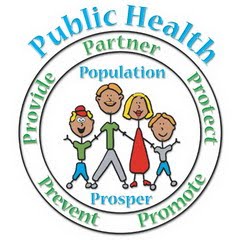- Fasting insulin: 2.3 uIU/mL
- Fasting glucose: 88 mg/dL
- HbA1c: 5.8%
- Total cholesterol: 252 mg/dL
- HDL: 111 mg/dL
- LDL (calculated): 131 mg/dL
- Triglycerides: 48 mg/dL
I'll start from the top. The fasting insulin value is excellent; 2.3 is so low it's outside the "reference range" that's typically encountered. I don't have a trace of hyperinsulinemia, which implies a high degree of insulin sensitivity. I won't be developing metabolic syndrome anytime soon. My fasting blood glucose looks good, not much to say there.
The HbA1c reading is higher than I was hoping/expecting. It's "normal", but on the high end of normal. That could imply mild glucose intolerance. Perhaps a result of years of slamming myself with white flour and sugar. The other possibility is that my blood cells turn over more slowly than usual, which would artificially inflate the HbA1c number. I may buy a glucose meter so I can monitor my post-meal glucose. I wish I had HbA1c data from healthy non-industrial populations with which to compare. 5.8% does associate with a slightly higher risk of heart attack than 5% and below.
The lipid panel looks good. My total cholesterol is on the high side, mostly due to my extremely high HDL. My RN wrote "This is the highest HDL (high density lipoprotein, or 'good cholesterol') I've seen in 22 yrs of clinical practice!!" My triglycerides are very low, which also associates with low CVD risk. My LDL is on the high side, but it's probably the "non-atherogenic large, fluffy" LDL, judging by my HDL and triglyceride numbers. My triglyceride:HDL ratio, the best common lipid predictor of heart disease I'm aware of, implies the lowest possible risk. Overall, the lipid panel looks very good to my eye.
However, I don't put a lot of faith in the predictive value of blood lipids. The studies that established links between blood lipids and CVD were typically performed in people eating the standard American diet. They don't necessarily imply the same risk in people eating an atypical diet like myself. Case in point, the Kitavans.
Here's a brief overview of my lifestyle:
- Diet, in descending order of calories: added fats like butter, lard, coconut oil and olive oil. Starchy foods like root vegetables, winter squash, legumes and quinoa (latter two always soaked 12-24 hours). Meat, organs and fish, wild or pasture-raised. Pasture-raised eggs. Soaked raw almonds and toasted hazelnuts. Fresh and fermented vegetables. Cheese, yogurt and raw milk. Fruit. Unsweetened chocolate. I estimate my macronutrient intake to be roughly 50% fat, 37% carbohydrate and 13% protein.
- Exercise: I cycle commute 30 minutes a day, lift weights briefly 2-3 times a week, sprint once a week, and hike regularly.
- Meditation: several times a week.
- Sleep: 8.5 to 9 hours almost every night.
- Assorted hormesis: weekly 24-hour fast, exercise, cold water swims, sauna.
- Good friends, family, community, relaxation.
- I eat a LOT of saturated fat, yet my risk of heart attack is probably very low.
- A diet high in saturated fat that includes carbohydrate is compatible with excellent insulin sensitivity, at least in the context of an otherwise good lifestyle.
- I should look into my post-meal blood sugar.

No comments:
Post a Comment